Recently I discovered the work of plein air painter Jeff Markowsky, whose “Jupiter Rises” (below) won this year’s Grand Prize in the Lighthouse Art Center Plein Air Festival. I reached out to Markowsky and invited him to share some words of wisdom on how to paint palm trees, a common element in his serene landscape paintings. With summer now around the bend, perhaps you’ll have the pleasure of painting palms in your future, and this advice will help you do so.
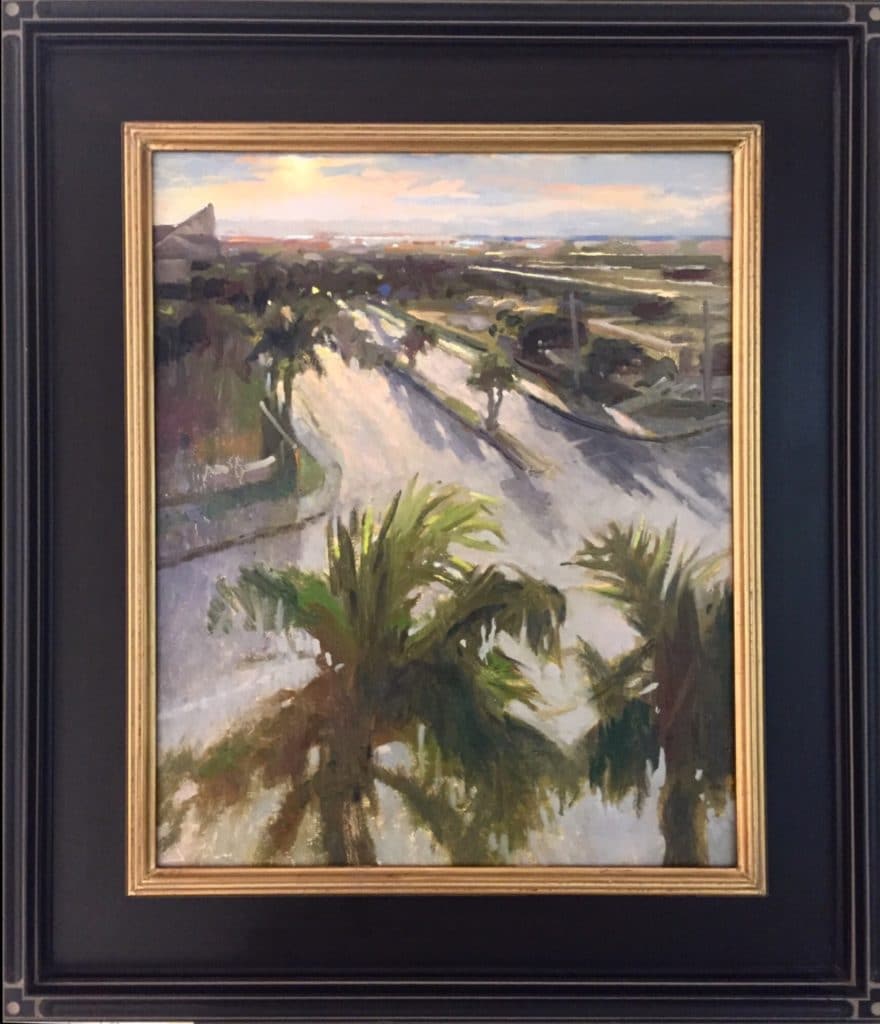
On Painting Palm Leaves and Trees
By Jeff Markowsky
Palm trees were a foreign image to me growing up in the prairies of midwestern Canada. When I moved to Savannah, Georgia in 1995 I became enamored with their sharp, looming presence. Their graphic impact against the sky has always lured me to want to paint them. I find their greens vary, relative to the time of day and the kind of light they swim in. But their cooler local tone has always had a soothing effect on me in the humid press of southern heat.
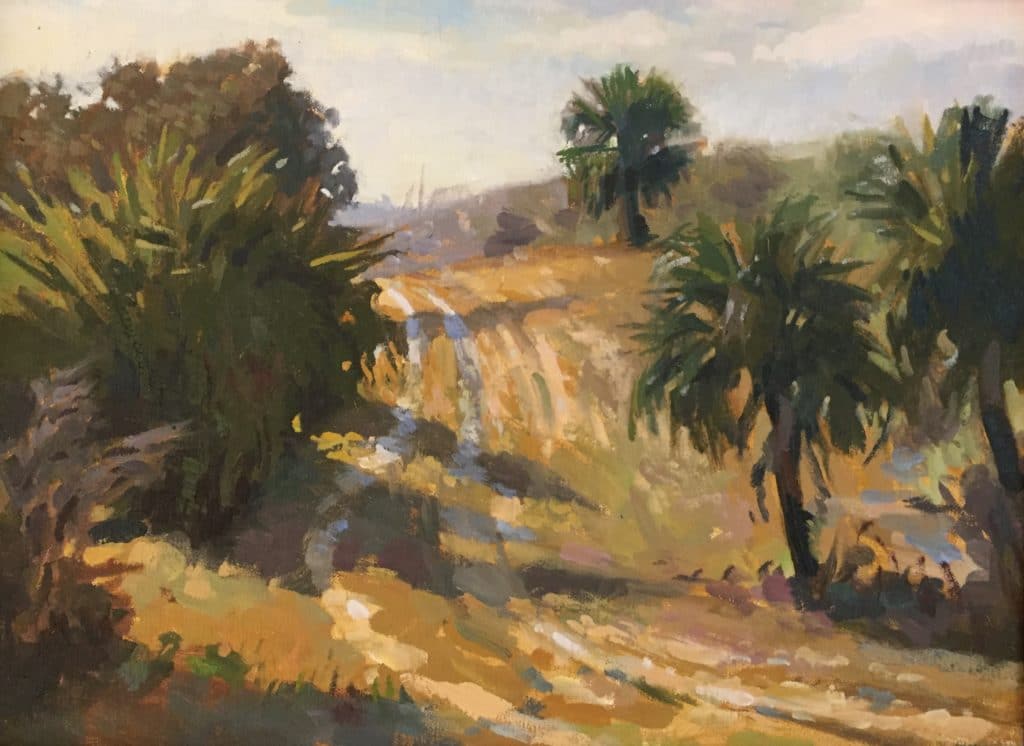
This local green color shifts on a variety of factors. It may be leaning towards a cobalt blue of the high midday sky, or be affected by the gray violet atmosphere when viewed sitting in the middle distance of a painting. Another factor when painting them is their age and how bountiful or not their leaves are. Some of the most appealing qualities to paint are the dead orange ochre leaves you often find hanging near the bottom of the palm near the trunk.
One of my favorite parts is poking the light of a negative space through and behind the central area around and between the branches. Edges become important, and even though they are hard and sharp by nature, the lost and found of an edge in space is important to give the form mass and volume in space, as affected by the atmosphere around them.
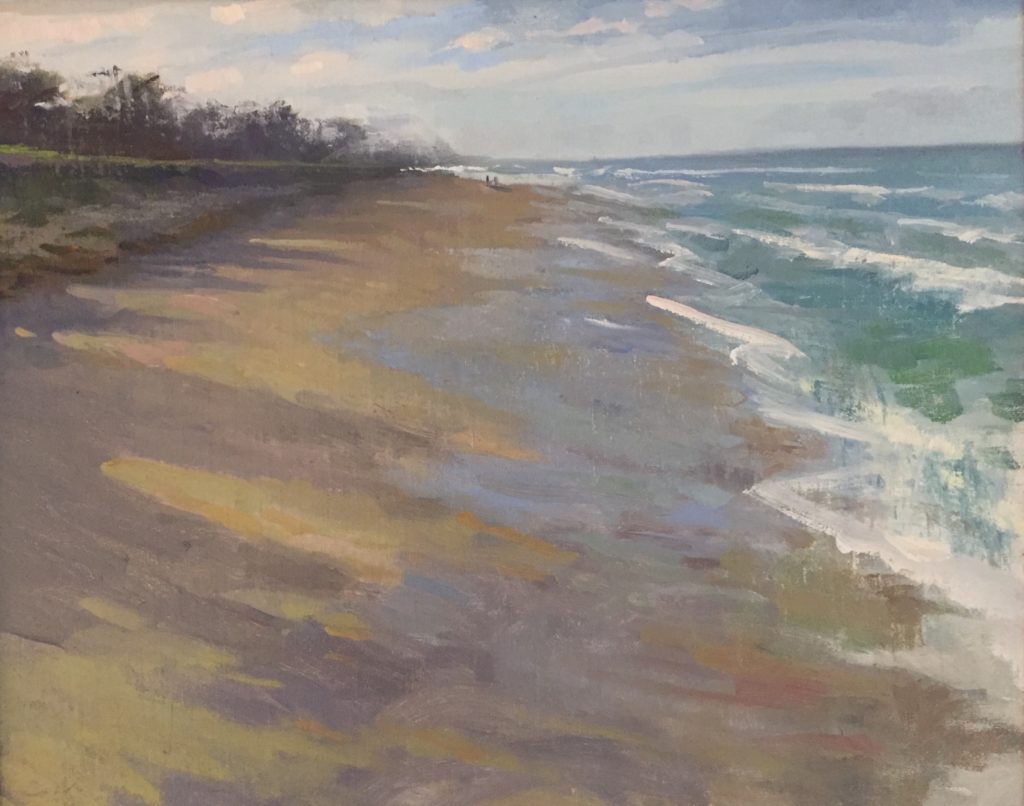
Paintbrushes for Palm Trees
Symi of Rosemary’s Brushes gave me two dagger bristle brushes when I first met her at the 2nd Annual Lighthouse Plein Air Festival back in 2015. I didn’t know at the time that those brushes would become a staple when painting palm trees. They have a sword-like quality for sculpting, coupled with the sharp tip for drawing, and when using the side they offer a fan-like quality for massing shapes.
Another useful brush is a short flat — the wider the better. I find the loaded end of them excellent for making sharp lines, almost like you would do with a palette knife to hit a highlight on an edge of a branch, or carve sky around one.
See more of Markowsky’s work at www.jeffmarkowsky.com.
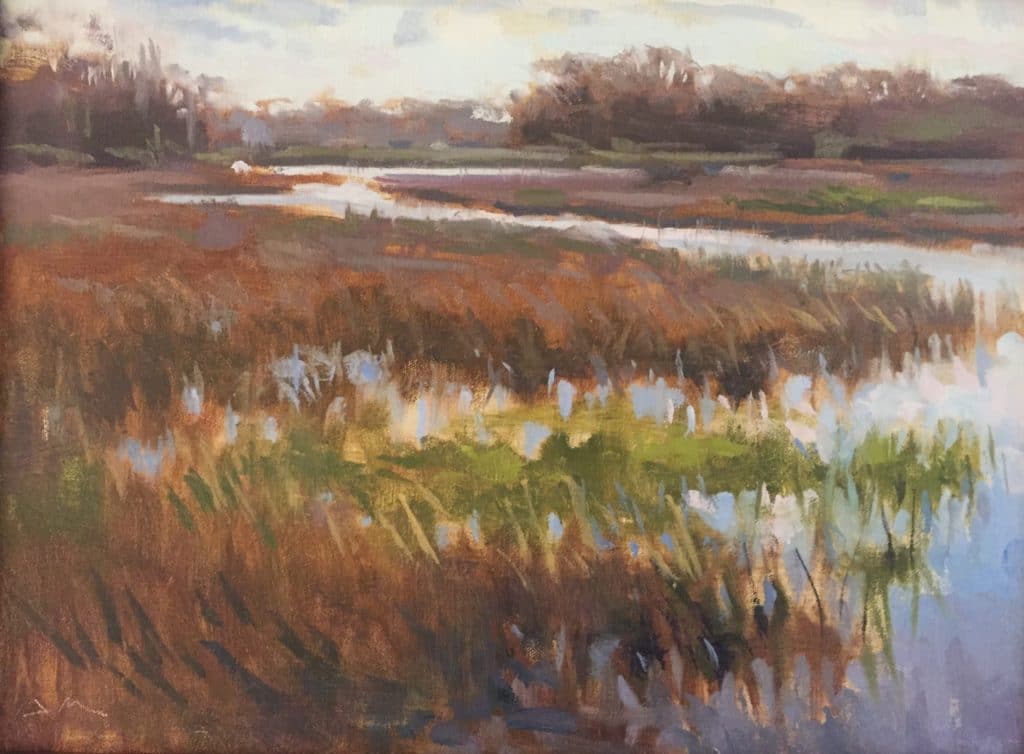
Related video:
The Impressionist’s Journey III – Plein Air Painting, Palm Trees by Diana McClary
Like this? Click here to subscribe to PleinAir Today,
from the publishers of PleinAir Magazine.

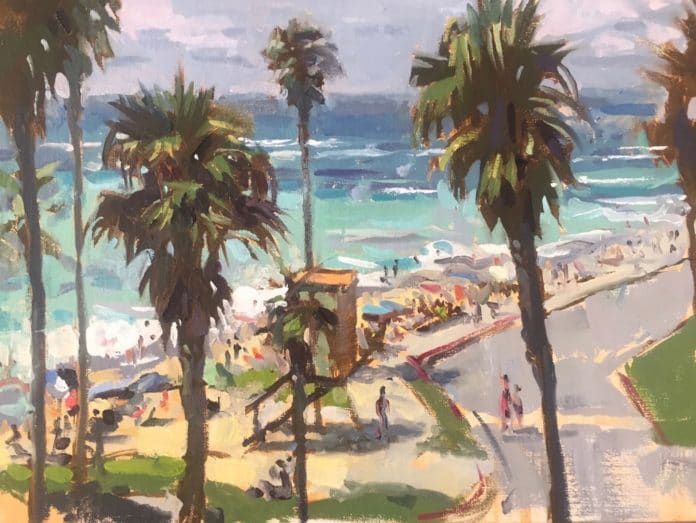



[…] This content was originally published here. […]